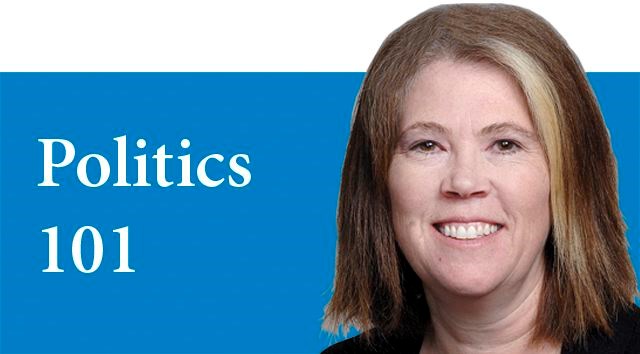Over the past several weeks, I have written about different electoral systems and how they work.
Last week, I demonstrated that there can be variations on different types of systems that fit a country's specific needs. Fair Vote Canada does an excellent job of showing how adapted systems can better fit the needs of a large and diverse country. I highly recommend their video series which is educational and informative.
And, as I promised last week, I think it is important to look at the politics of electoral change and to see how such changes fit within the broader political structure.
A key component of the discussion about electoral reform is having a clear understanding of the role of political parties in our system of politics. Political parties are really the key organizing bodies in the system. Parties work to aggregate interests. In other words, they bring together like-minded people around a series of public policy issues. They organize approaches to government policy based on an ideology or a set of principles.
These ideologies or principles often represent a worldview about the proper relationship among the state, the society and the individual. In this way, members or followers of political parties have a broad sense of the types of public policy that will be enacted if the party is elected. While we hear of specific platforms at election time we know that governments, on a daily basis, make policy decisions that were not the focus of a campaign.
If we have a strong sense of the party's basic approach to governing we can anticipate the kind of public policy they will enact.
In our system, political parties essentially organize the machinery of government.
We know that major political parties want majority governments because the Westminster style of Parliament works "best" (for political parties) when there is one dominant party that can move legislation forward relatively unencumbered.
Certainly our system has some checks and balances but, without doubt, having a majority in Parliament gives the prime minister and the prime minister's party considerable power. Also, we must remember that political parties get some public funding in order to be able to function. If you are interested in the details of party finance, see the Elections Canada website.
Canada's history related to political parties is that we have gone through an interesting evolution. For a long time in Canadian history we had a strong two party system in which the Conservatives and the Liberals "took turns" in government. Over time we moved to a "two and a half" party system in which the NDP became important enough to influence the major political parties to accept some of their party principles but not important enough to win government. Then we saw the emergence of more parties that aggregated the interests of regions like the West and Quebec. More recently we have seen three parties play a significant role in the House.
I say all of this as a way to contextualize the discussion about electoral reform because when pundits and politicians talk about what might be the result of a new electoral system they are, at least in part, asking how political parties will respond to the new dynamics created by different systems. Will there be a rise in the number of political parties? Will there be more minority governments? What does a more diverse House of Commons mean for governing? How will the power that the traditional parties be impacted?
Let me just point out that in 1952 British Columbia did change its electoral system to the "alternative vote system" (in which voters rank their choices for representation on the ballot with the aim to get a majority not a plurality in each riding).
According to many sources, the aim of the provincial Liberal and the Conservative parties (at the time) was to disadvantage the CCF. The assumption was that a Liberal party voter would choose a Conservative as their second choice and vice versa.
They assumed incorrectly. Second choices generally went to the Social Credit Party.
In 1953, under the leadership of Premier W.A.C. Bennett, the electoral system was returned to first-past-the-post.
The fact is that it has been difficult to change a system that leaves uncertain the fate of traditional political parties and uncertainty as to the outcomes of a changing political culture.



